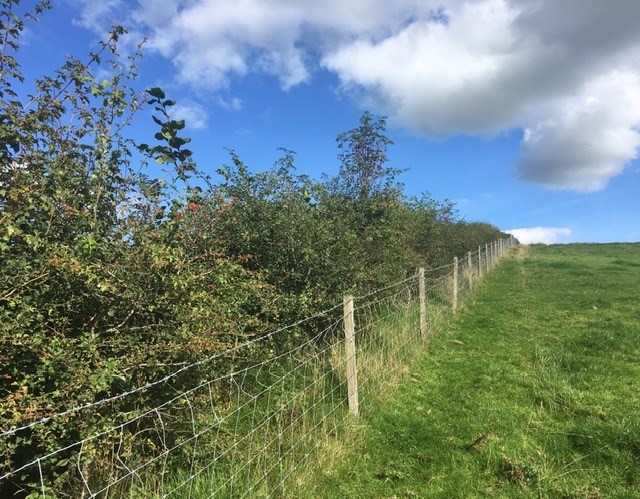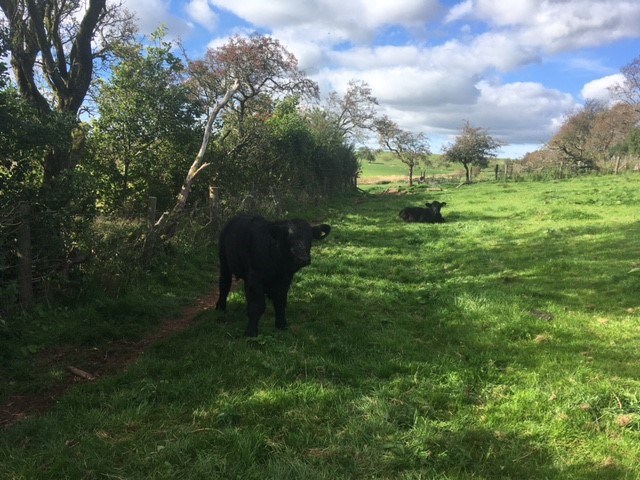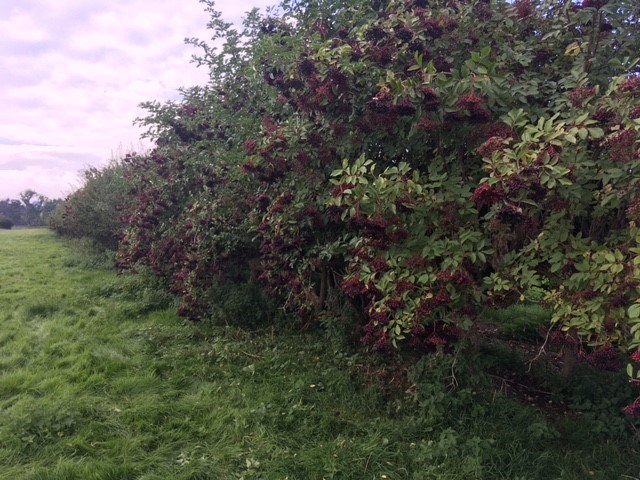Why is it important to have healthy hedges on your farm, and how can you maintain them?
Agroecology is sustainable farming that works with nature – or, more specifically, ecology (the relationships between natural things, like animals and plants). At the Soil Association, we’re helping to make agroecology more mainstream in a number of ways, including by supporting nature-friendly farming innovation via the Innovative Farmer programme and campaigning for over half of UK farms to have agroforestry systems in place by 2030.
Agroforestry, a branch of agroecology, is the practice of combining crops or livestock with trees, shrubs and hedges: something which farmer Kate Thomas does very well. We caught up with her to find out why hedgerows are so important for her farm in the Brecon Beacons, and her top tips for farmers who are considering utilising them to their advantage. Keep reading…
What made you want to invest more in hedges?
We have been in Wales for twenty-eight years, and organic farmers for over twenty of them. Organic farming always felt like the right option for us - the reward is more than just the bottom line. How you live is important too, and how you treat the environment you live in. This is our home, and I enjoy seeing how the practices we adopt on our farm, including agroforestry, help it to flourish. Because of them, we see more biodiversity and a greater range of wildflowers on our land... it’s a real joy to be here.
In terms of investing in hedges, specifically, there weren’t many boundaries on our farm when we first started. At least none that were in particularly good order! To help us address this we decided to sign up for a hedgerow renovation scheme, funded by the Welsh government. They advised us to restore the hedges that we had as well as to plant new ones. By doing so, we quickly began to see the benefits that hedges could bring to our farm and the important role they played in an agroecological system. The rest is history!

Hedges that were planted five years ago to act as additional fencing.
What are the main benefits of having healthy hedges?
Where to start! Hedges are essentially lots of little trees, so the benefits you get from them are generally the ones you would expect to see from the other types of trees used in an agroforestry system. Hedges:
-
Form barriers in-between fields and keep livestock enclosed
Contributing to better farmland management.
-
Provide shelter for wildlife and farm animals across the seasons
Which is becoming a particular concern of ours over summers, which appear to be getting increasingly hotter. I would argue that shade is becoming a bigger and bigger issue as a result, making our hedges even more important, as the shade that they provide contributes to lowering heat stress among our animals.
-
Attract biodiversity
Hedges act as a home and source of food for invertebrates, pollinators, birds and small mammals, which in turn, can really benefit your farm’s natural processes and boost your agroecological efforts.
-
Are a food source for wildlife, livestock and soil
Different species of hedgerow plants provide flowers (and therefore nectar and pollen) and berries, leaves, twigs and more, which nourish a range of animals and birds and add organic matter to the soil. The stock also enjoy browsing the hedges.
-
Help you to take care of your farmland
Slowing down water runoff and contributing to carbon sequestration, as examples.
-
Create ‘corridors’ for creatures to travel through safely
Acting as a secure means by which wildlife can navigate to different areas of your farm.

Keeping the cows cool!
How do you keep the hedges on your farm in good condition?
The main thing I would tell other farmers to do (or, rather, not to do) is to stop flailing their hedges so regularly! On our farm, we do it on rotation: trimming different sections of our hedgerows roughly once every three years. This way, we always have a range of hedges in different stages of growth. A hedge only flowers on second year growth, so by waiting for three years before flailing them, we get to benefit from its full lifecycle: watching our hedgerows grow and then produce flower and fruit. Cutting hedges later in the season can also help, allowing the fruits to be consumed before going in with the flail!
Of course, by not cutting them back, your hedges are likely to look less neat… but I think that’s a good thing. The more ‘untidily abundant’ they appear, the more likely that they’re thriving.
Is there a number one priority you would suggest for farmers who are just beginning to pay closer attention to their hedges?
Following on from the above, I would recommend that they leave a bit of their hedgerow alone for at least two years. We took on some ground a couple of years ago, where the hedges had been flailed every year for three or four decades, to the extent where the livestock living there was beginning to struggle to find shade. All we did was leave the hedges alone to grow, and the difference this summer is just amazing: they have put on so much growth and are showing huge potential for the local environment. It makes you wonder… there’s miles and miles of hedgerows that are trimmed every year. Imagine how much biodiversity would occur if we left them alone!
What about if your hedges are in bad condition?
If a hedge needs repairing then you have options to coppice it back, or if it comes to it, you can relay them. It’s basically like starting from fresh, but the potential benefits you'll get from your fully-grown hedgerows are nothing short of incredible.
If you need to replace your hedges, keep an eye out for local tree nurseries and similar. Local varieties should be your priority, as these are the most likely to prosper on your land. It doesn’t take a lot to get started… and from the results we’re seeing? We’d say that hedges are more than worth it.

A hedge in abundance.
For more information about the practices of agroforestry, please consider downloading the free agroforestry handbook.


